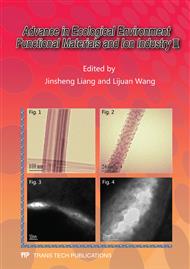p.203
p.208
p.215
p.218
p.224
p.230
p.236
p.243
p.248
Testing Method of Spontaneous Polarity Used in Powders Industry
Abstract:
By fitting calculation of functional relationship between charge quantity and temperature on condition that powders were shielded, a device was proposed to measure spontaneous polarity of powders, and samples of typical tourmaline were measured. The results showed when tourmaline powders of different origins were heated to 80, minimum value of spontaneous polarization strength was 3.204×10-4C/m2, and maximum value was 1.53×10-3C/m2. The conclusion was in accord with results got from crystal structure analysis, and repeatability r was 1.726×10-6C/m2 with 95% confidence probability.
Info:
Periodical:
Pages:
224-229
Citation:
Online since:
January 2012
Authors:
Keywords:
Price:
Сopyright:
© 2012 Trans Tech Publications Ltd. All Rights Reserved
Share:
Citation:


